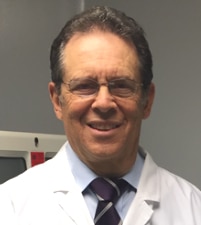
Temple Hills Office
4302 St. Barnabas Road
Temple Hills, MD 20748
Clinton Office
9131 Piscataway Road
Suite #730
Clinton, MD 20735

More Senior Health Articles
Non-Surgical Treatment For Heel Pain
Plantar fasciitis is a painful condition of the heel, arch, and less commonly the toes that results from inflammation or tearing of the connective tissue (ligament or elastic band) that stretches from the heel across the arch of the foot into the base of the toes. It may or may not be associated with a heel spur (bony or calcified deposit), in which case it is called heel spur syndrome.
The majority of patients with this condition can be treated successfully with conservative therapy, which may include a combination of rest, physical therapy, stretching, nonsteroidal anti-inflammatory drugs (NSAIDs), corticosteroid injections, strappings, nightsplints, orthotics or casting.
In spite of the excellent success rate of conservative therapy, many patients continue to suffer from chronic heel pain. Until now, the only alternative for these patients was surgical intervention. As with any surgery, there are risks and complications. Complications have been reported in 15-20% of cases in some studies.
Recently, a non-surgical alternative modality called Extracorporeal Shock Wave Therapy (ESWT) gained the FDA's approval. It is a non-surgical, non-invasive alternative for chronic heel pain sufferers who have failed to improve after an extended period of conservative therapy.
Shockwaves, also known as pressure or sound waves, are generated from a special FDA approved ESWT device directed at the targeted painful tissue. The concept in orthopedic disorders is that the shockwave stimulates and reactivates healing to encourage revascularization and other elements necessary to advance normal tissue healing.
Since there is no incision, the patient may leave the office in their own shoes and supportive foot gear and return to daily activity immediately following the procedure. Application of ice and the use of anti-inflammatory medication may prove helpful for the first several days. One may expect an increased level of discomfort three to seven days post treatment as the local inflammatory response ensues. Strenuous weight bearing athletic activities should be avoided for at least the initial two to three weeks.
While no treatment modality can be considered a panacea for heel pain sufferers, several studies have shown long-term patient satisfaction results following ESWT treatment to be in the neighborhood of 82-85%. One five-year follow-up showed a 90% satisfaction rate. This compares favorably with 83% of patients that had undergone surgical release of the fascia, but without the risks or disability associated with an open heel spur/plantar fasciitis surgery.
Other Articles You May Find of Interest...
- Five reasons meditation can be important for the elderly
- The Types of Negligence Residents of an Assisted Living Facility Suffer
- 3 Types of Exercises Best for Seniors With Arthritis
- Independence Boost: How Medical Alerts Help Chronic Conditions
- Over-the-Counter Hearing Aids (OTC)
- Therapeutic In-Home Sauna Service for Homebound Seniors
- Staying Active and Engaged: A Guide to Enhancing Senior Wellbeing

















